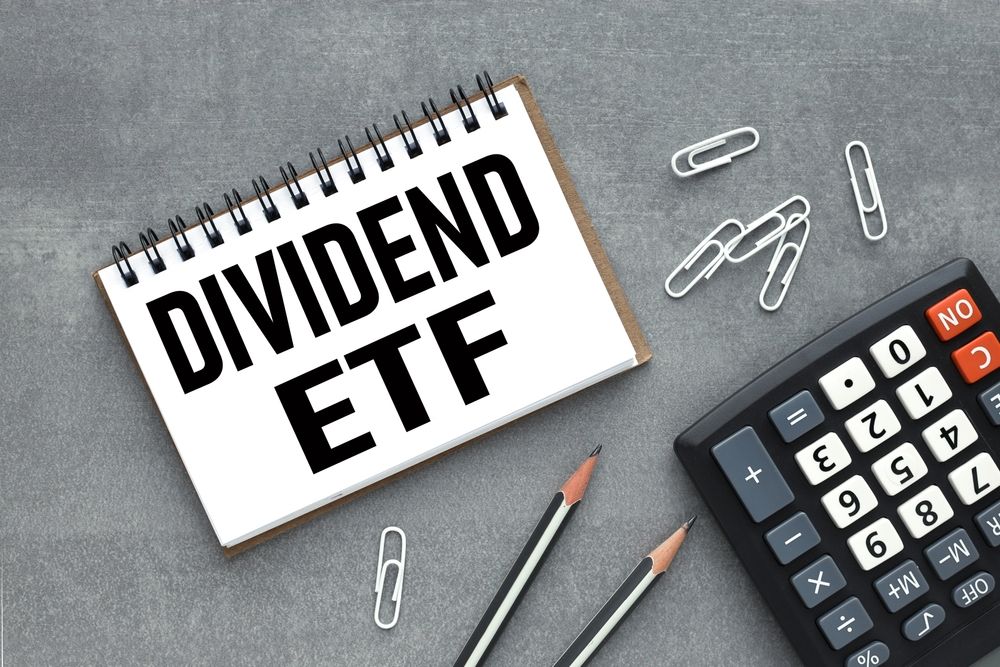Generating passive income through dividend Exchange-Traded Funds (ETFs) can be a strategic and rewarding way to grow your wealth over time. For those looking to save money or make shrewd investment decisions, dividend ETFs offer a blend of diversified investment opportunities with the added advantage of generating steady income through dividends.
Dividend ETFs
Dividend ETFs are funds designed to invest in a basket of dividend-paying stocks. They aim to replicate the performance of a specific index that is comprised of these stocks. The appeal of ETFs lies in their ability to offer diversification, liquidity, and professional management at a lower cost compared to mutual funds. Dividend ETFs specifically focus on shares that return a portion of their earnings to shareholders in the form of dividends.
Why Choose Dividend ETFs?
Several factors make dividend ETFs a compelling choice:
Steady Income Stream: Unlike growth-focused investments that may not pay any dividends, dividend ETFs provide a reliable income stream. This is especially appealing for retirees or those seeking supplemental income.
Diversification: Investing in an ETF provides exposure to a broad array of stocks, reducing the risk associated with holding a single company’s stock.
Professional Management: Understanding which stocks pay the best dividends, when to buy, and when to sell can be complex. Dividend ETFs are managed by professionals who make these decisions based on rigorous analysis and research.
Cost-Effectiveness: ETFs typically have lower expense ratios than mutual funds. This means you keep more of the income earned, allowing your wealth to compound over time.
Getting Started with Dividend ETFs
To begin generating passive income through dividend ETFs, consider the following steps:
1. Define Your Investment Goals
Establish clear objectives. Are you investing for retirement, to supplement current income, or to build wealth for a large purchase? Your goals will influence the type of dividend ETFs you choose and the risk level you are willing to accept.
2. Conduct Thorough Research
Investigating potential ETFs is crucial. Look at:
- Dividend Yield: This measures how much a company pays in dividends relative to its share price. Higher yields can indicate greater income potential, but also higher risk.
- Dividend History: A consistent record of dividend payouts can indicate stability and reliability.
- Expense Ratio: Lower ratios mean more of your investment returns remain in your pocket.
- Index Tracked: Understand what kind of stocks the ETF holds and how they align with your risk tolerance and financial goals.
3. Diversify Your Portfolio
Even though dividend ETFs are already diversified, for optimal risk management, consider having a mix of low, medium, and high yield ETFs. Diversifying across different sectors, such as utilities, healthcare, and consumer goods, can further reduce risk.
4. Consider Dividend Reinvestment Plans (DRIPs)
DRIPs allow you to reinvest dividends earned back into the ETF, automatically buying more shares. This can compound your investment, leading to exponential growth over the long term.
5. Monitor and Adjust Your Portfolio
While ETFs require less hands-on management than individual stocks, periodic review and adjustment are necessary to ensure alignment with changing market conditions and personal goals.
Notable Dividend ETFs to Consider
Here are some popular dividend ETFs worth considering:
- Vanguard Dividend Appreciation ETF (VIG): This ETF focuses on companies with a history of increasing dividend payments, providing a stable and growing income source.
- iShares Select Dividend ETF (DVY): DVY seeks to track the performance of high-yielding U.S. companies, making it attractive for income-focused investors.
- Schwab U.S. Dividend Equity ETF (SCHD): With a focus on quality and sustainably-paying stocks, SCHD is known for its consistent performance and low expense ratio.
Each of these ETFs offers unique advantages, so consider how they fit into your personal finance strategy.
Risks and Considerations
While dividend ETFs are generally less risky than investing in individual stocks, they are not without risks:
Market Risk: ETFs are subject to market fluctuations. Economic downturns can affect the value of your investments.
Interest Rate Risk: Rising interest rates may prompt a shift from dividend stocks to interest-bearing investments like bonds, potentially affecting ETF performance.
Currency Risk: For ETFs that hold international stocks, currency exchange fluctuations can impact returns.
Awareness and understanding of these risks can inform more prudent decision-making, ultimately safeguarding your investments.
Tax Implications
Dividends are generally taxed as they are considered income. However, qualified dividends, which are dividends from domestic and certain foreign corporations, can be taxed at a lower capital gains rate. It’s important to understand how your dividends will be taxed and consider leveraging tax-advantaged accounts like IRAs to defer tax liabilities.
Setting Long-Term Expectations
Investing in dividend ETFs is more about consistency than getting rich quick. It requires patience and discipline to reinvest and a focus on gradual, stabilizing income gains. This slow growth is beneficial not only in building wealth but also in buffering against market fluctuations.
Embracing Automation
Leveraging automated investing platforms can streamline the process of investing in dividend ETFs by setting regular contribution schedules, thus increasing your holdings systematically without the stress of market timing.
Creating a Wealth-Building Strategy
By wisely choosing dividend ETFs, you’re building the foundation for a strategic wealth-building plan. These investments can provide reliable and substantial passive income streams, crucial for both current and future financial needs. As with any financial strategy, it’s wise to keep learning, stay informed, and when in doubt, seek advice from financial professionals to better tailor your strategies to your personal needs.
Whether you’re new to investing or refining an existing portfolio, focusing on dividend ETFs can be an effective step towards achieving financial independence and long-lasting financial health. The balance of stable returns through dividends and long-term capital appreciation offers a unique advantage in a diversified investment portfolio. Savvy investors who prioritize steady income and strategic growth often turn to dividend ETFs as a key cornerstone of their financial strategy. Through diligent research, diversification, and strategic reinvestment, dividend ETFs can be an invaluable tool for achieving your financial aspirations.



